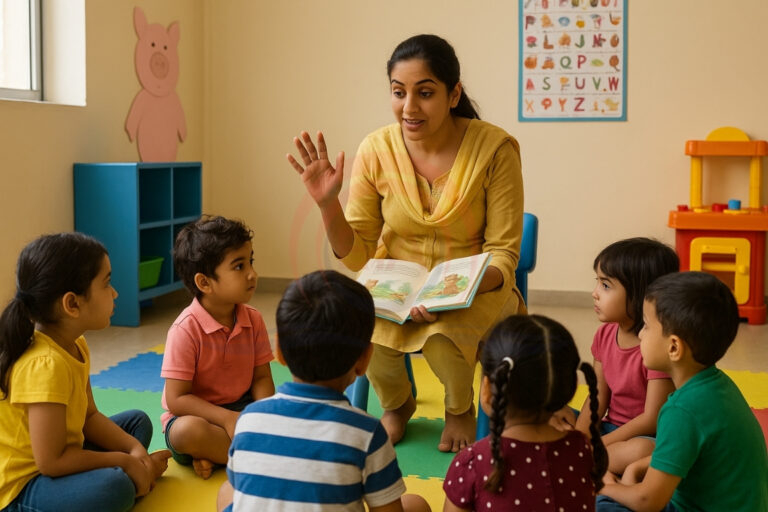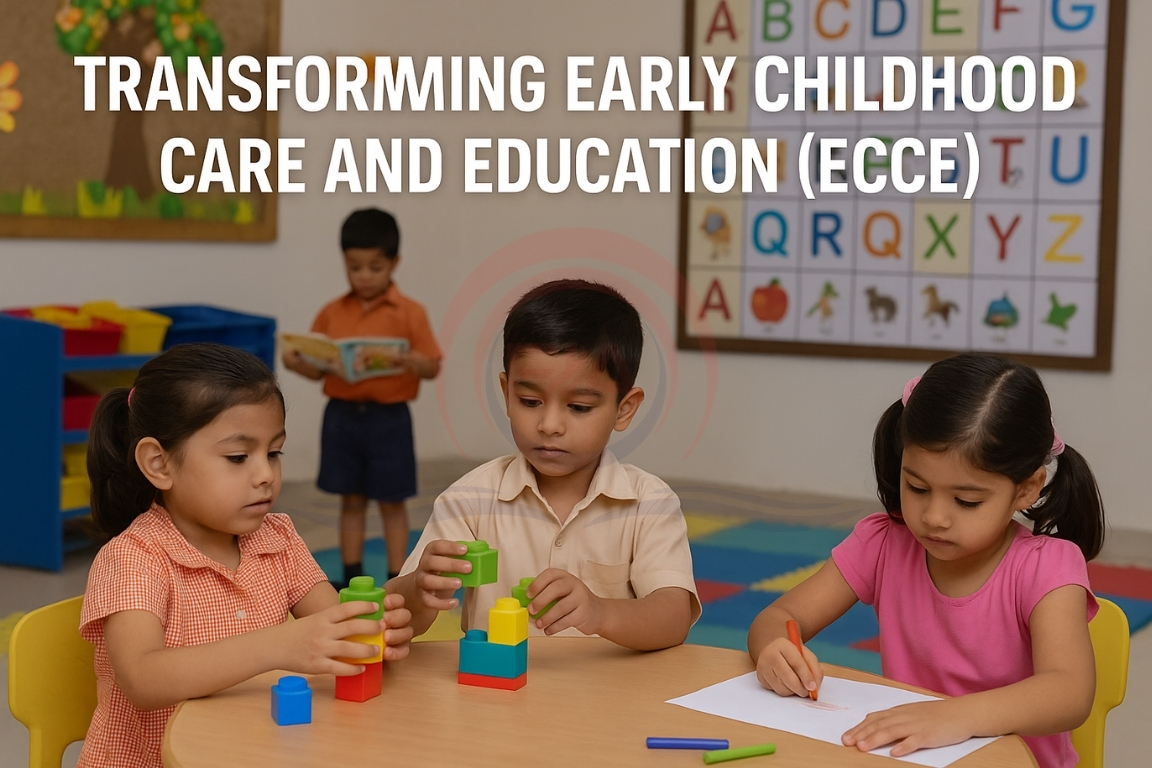The National Education Policy (NEP) 2020 has initiated a structural transformation in Early Childhood Care and Education (ECCE), with government schools opening preschool classes (Balvatikas) for 3–6-year-olds to ensure equity in early learning opportunities.
Background
- Earlier, government schools admitted children only from Class 1, while private schools offered nursery classes.
- Public ECCE was mainly through Anganwadis under ICDS, leading to early inequity in learning access.
- NEP 2020 mandates universal ECCE by 2030, introducing Balvatika (preschool classes 1,2,3) in government schools.
What are anganwadis?
- Anganwadis are rural child care and development centers in India established under the Integrated Child Development Services (ICDS) scheme (1975).
- The term “Anganwadi” means courtyard shelter, and these centers serve as community hubs for health, nutrition, and early education services for mothers and children.

Services Provided by Anganwadis (Under ICDS)
- Supplementary Nutrition Provides hot cooked meals and take-home rations to children (6 months–6 years), pregnant women, and lactating mothers.
- Health Check-ups and Referrals: Regular growth monitoring and basic health check-ups for children under 6. Referral services to hospitals for those needing medical attention.
- Immunisation Support: Assist in routine vaccination of infants and children. Tetanus and other vaccines for pregnant women in coordination with health departments.
- Health and Nutrition Education: Educate mothers on breastfeeding, complementary feeding, hygiene, and family planning.
- Pre-School Non-Formal Education (ECCE): Conduct Balvatika or early childhood care and education (ECCE) for children aged 3–6 years.
Expansion of ECCE Sector
- ECCE network will grow beyond 14 lakh Anganwadis, as government schools add preschool classes.
- Samagra Shiksha scheme is funding new ECCE classes in government schools.
- Personnel management challenges: recruitment, training, and deployment of preschool educators.
- Progress is uneven: Some states fully utilise provisions, while others under-utilise or delay implementation.
Migration from Anganwadis to Schools
- Parents prefer preschool in schools over Anganwadis due to a perceived better learning environment.
- Anganwadis risk losing 3–6-year-old children, changing their traditional role.
- Government initiated “Poshan bhi Padhai bhi” to integrate education into Anganwadi services.
- Caution: Avoid over-schoolification; preschool should remain play-based, not solely reading and writing.
Focus on 0–3-Year-Olds and Home Visits
- Greatest developmental impact occurs in the first 1,000 days of life.
- Home visits for 0–3-year-olds improve cognitive and emotional growth, as shown in Perry Preschool and Yale-Pratham studies.
- If 3–6-year-olds shift to schools, Anganwadi workers can focus on 0–3-year-olds and maternal care.
- Requires strengthening POSHAN Abhiyan and ICDS with better training and reduced workload.
Significance
- Aligns with universal ECCE by 2030, fulfilling NEP 2020 vision of equity and inclusion.
- Balances nutrition, health, and learning, crucial for human resource development.
- If implemented effectively, it will transform early childhood education and support India’s demographic dividend.





